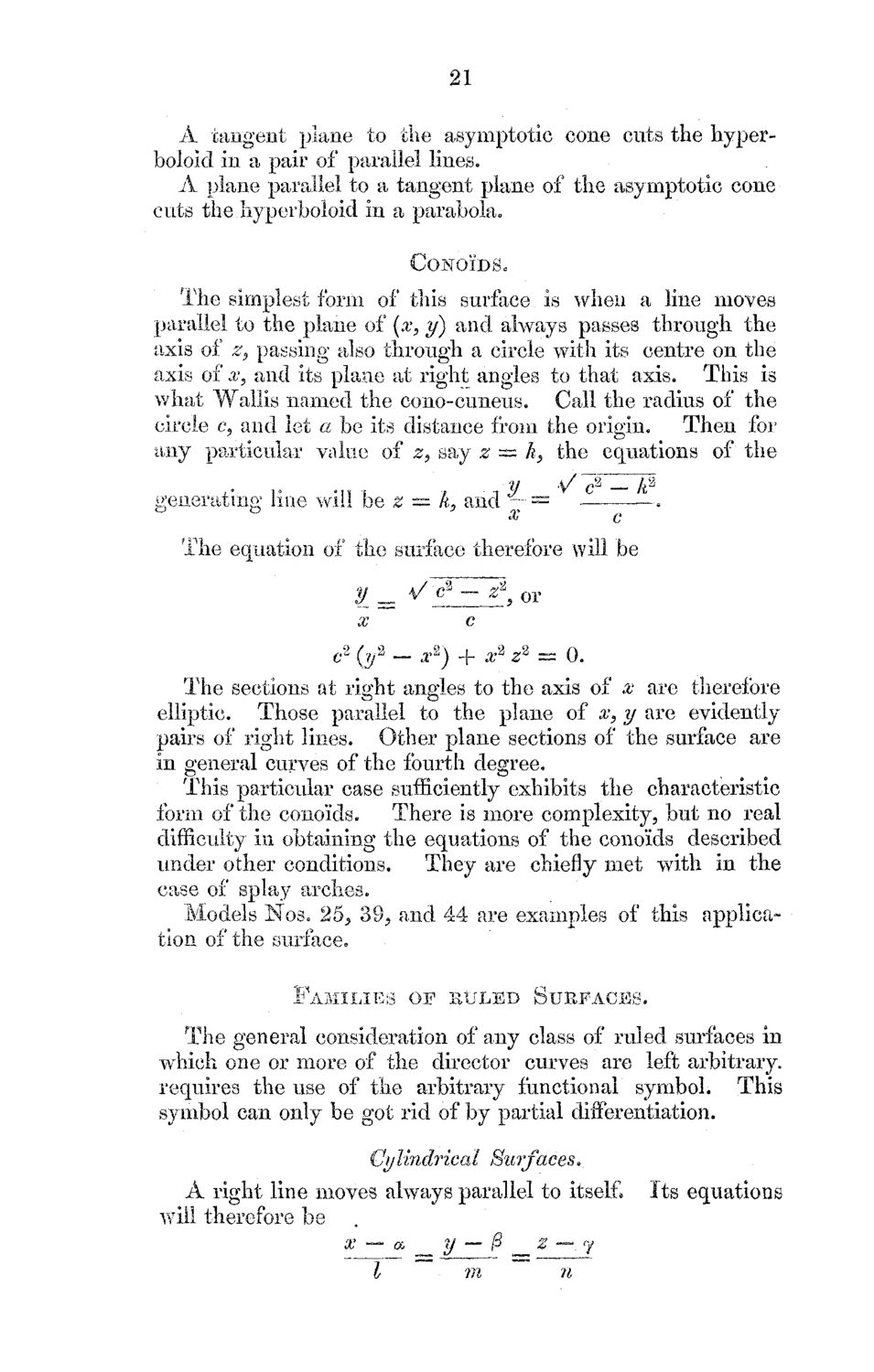Caption: Mathematical Models Catalog of a Collection of Models of Ruled Surfaces
This is a reduced-resolution page image for fast online browsing.

EXTRACTED TEXT FROM PAGE:
21 A tangent plane to the asymptotic cone cuts the hyperboloicl in a pair of parallel lines. A plane parallel to a tangent plane of the asymptotic cone cuts the hyperboloid in a parabola. Conoids, The simplest form of this surface is when a line moves parallel to the plane of (x, y) and always passes through the axis of z9 passing also through a circle with its centre on the axis of x3 and its plane at right angles to that axis. This is what Wallis n a m e d the cono-cuneus. Call the radius of the circle c9 and let a be its distance from the origin. T h e n for any particular value of z^ say z — k5 the equations of the y , / c% y S \ ^ generating line will be z = k5 and — = . x c T h e equation of the surface therefore will be I = V'c2- **, or x c c2 (y2 _ x2) + x2 z2 = Qo The sections at right angles to the axis of x are therefore elliptic. Those parallel to the plane of x9 y are evidently pairs of right lines. Other plane sections of the surface are in general curves of the fourth degree. This particular case sufficiently exhibits the characteristic form of the conoids. There is more complexity, but no real difficulty in obtaining the equations of the conoids described under other conditions. They are chiefly met with in the case of splay arches. Models Nos. 25, 395 and 4 4 are examples of this application of the surface. Families of ruled Surfaces. The general consideration of any class of ruled surfaces in which one or more of the director curves are left arbitrary. requires the use of the arbitrary functional symbol. This symbol can only be got rid of by partial differentiation. Cylindrical Surfaces. A right line moves always parallel to itself, Its equations will therefore be x ~~a — v ~~ $ _ z ~~ y I in n
|